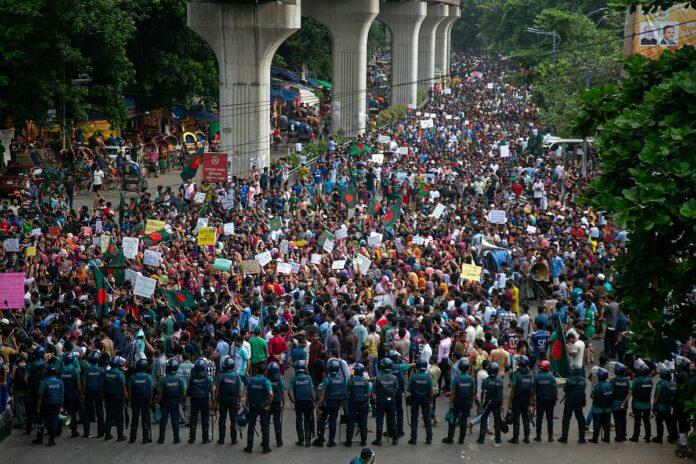The Office of the High Commissioner for Human Rights (OHCHR) has released a damning fact-finding report on the human rights violations committed during the July-August 2024 protests in Bangladesh. The report, based on over 230 interviews, forensic analysis, and verified footage, accuses the former government—led by the Awami League—of systematically orchestrating a violent crackdown on peaceful demonstrators.
The protests erupted after the High Court reinstated a controversial 30% public sector job quota for descendants of independence war fighters. However, the unrest reflected deeper grievances over government corruption, economic inequality, and political repression. Tens of thousands of students, workers, and opposition activists took to the streets, demanding reforms.
The report provides evidence of coordinated state violence, revealing that security forces—including the police, Rapid Action Battalion (RAB), Border Guards Bangladesh (BGB), and the Army—used excessive and lethal force to suppress dissent. Over 1,400 people were reportedly killed, with thousands more sustaining severe injuries. Many were shot at close range with military rifles and shotguns loaded with metal pellets. Approximately 12-13% of those killed were children.
Eyewitness accounts detail how Chhatra League activists, armed with blunt and sharp weapons, violently attacked protesters—often under police supervision. Female protesters faced sexual violence, including threats of rape and physical assault. Security forces and intelligence agencies obstructed medical care for the wounded, raided hospitals, and intimidated medical staff.
The report also highlights widespread arbitrary arrests and enforced disappearances, with over 11,700 individuals detained. Protest leaders were subjected to brutal torture, including electric shocks, beatings, and forced confessions. Intelligence agencies such as DGFI and NSI surveilled civilians, carried out illegal detentions, and obstructed access to legal representation.
In addition, a nationwide internet blackout was imposed to suppress information flow and media reporting. Security forces intimidated journalists, leading to at least six being killed and over 200 injured while covering the protests. The government’s systematic efforts to silence dissent extended to legal threats against opposition voices and civil society members.
Despite the brutal crackdown, protests escalated. As public outrage mounted, demands shifted from reforms to the resignation of Prime Minister Sheikh Hasina. The Army, initially complicit, began distancing itself from state violence. On August 5, hundreds of thousands of protesters marched toward central Dhaka in defiance of government orders. The military ultimately refused to fire on protesters, forcing Hasina to flee the country by helicopter.
Following her departure, the interim government, led by Chief Advisor Dr. Muhammad Yunus, initiated accountability measures. Several senior officials have been arrested, and cases have been filed against former government leaders. However, challenges remain, with key perpetrators still in power, evidence tampering, and deep-rooted corruption within the justice system hindering progress.
The UN has called for urgent reforms to prevent future repression. Key recommendations include:
- Judicial and security sector reforms to ensure independent investigations and accountability.
- A victim-centered transitional justice process to address past abuses, provide reparations and establish truth-seeking mechanisms.
- Legislative changes to dismantle oppressive laws enabling state violence.
- Economic and governance reforms to address structural inequalities fueling discontent.
While the interim government has pledged to uphold human rights, the long history of impunity in Bangladesh raises concerns about genuine accountability. The international community is urged to monitor developments closely and provide technical assistance in ensuring justice for victims.




